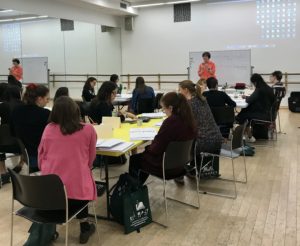The field of literacy is rife with misconceptions. One of the most common is that reading instruction doesn’t need to be based on evidence. But reading is actually a science, with evidence and research behind some of its most effective teaching methods. And with one in every four students struggling to read, it’s clear that the current system is doing teachers, children, and their families a major disservice.
Really, it all comes down to adequately preparing teachers so they can properly teach their students to master literacy. But much of these evidence-based practices are missing from teacher preparation programs — why? It seems like in past years, we’ve gotten teacher prep all wrong, and now our students are paying the price.
How can we change teacher preparation programs for the better? How can we ensure instructors and educators are prepared to best teach kids how to read? This article will explore some of the reasons why past teacher prep has failed and how we can get reading instruction right going forward.
Why are current teaching programs simply not working?
The data is there. As we stated above, if one in every four children in America can’t read well, proving that something just isn’t working. And it’s not for lack of effort by teachers. We’re essentially failing teachers, who are therefore failing their students, especially ones with language-based learning difficulties that require a more advanced and scientific approach in order to properly learn.
It’s difficult to pinpoint where teacher instruction went wrong, but at first, reading simply wasn’t connected to evidence-based theory. Misconceptions led instruction, and still do in many cases. Many people thought reading was something innate that kids would just learn. Diagnosing language-based learning difficulties wasn’t the norm. Evaluating these programs hasn’t been easy, and getting static methods of comparison and evaluations into schools to understand if, how, and why reading instruction wasn’t working seemed an insurmountable feat.
Even now that it’s clear kids are struggling to read, current methods are often failing, and research has shown that a more scientific approach provides results, it’s extremely hard to implement quick change.
The path to change: Solutions to literacy via teacher preparation and beyond
As we stated above, change isn’t always easy. Getting creators of teacher prep programs to create change can be time-consuming and expensive, but it is possible. Change must begin at the level of teaching teachers how to instruct students effectively. Curriculums must reflect scientifically backed research, too.
Here are some ways to best implement change:
Dig into the evidence: Trust and utilize science-based reading research and programs
According to the National Council on Teacher Equality, the rate of reading failure would be significantly reduced if teachers were trained using scientifically backed research. This research encourages incorporating teaching approaches that include decoding skills, word recognition, language comprehension, and phonological awareness.
Using evidence to guide teachers will ensure that any misconceptions plaguing the field of literacy will slowly disappear, giving way to approaches that have been researched with proven success.
Train teachers the right way
Teachers may not always have access to the latest research or scientific information about reading. Universities and teaching programs need to facilitate this information when training educators, giving them the tools they need to instruct their students. A well-trained teacher should be able to instruct their students using science based approaches even when the curriculum may not reflect these approaches.
Ensure curricula reflect research-based teaching approaches
It’s not enough to just train teachers. As teachers don’t always have the ability to create or modify curricula, including what texts their students read, it’s important that those creating the curriculum are also aware of scientific literacy research and use it to make sure not only that teachers are trained, but that superintendents, school districts, principals, and anyone else responsible for curricula creation understand these evidence-based methods.
Teachers need to connect directly with their higher ups, which then need to connect with school districts and university partners in order to discuss the whys and hows of changing the programs that train teachers. The line of communication must be vast, and include all participating members in the education pipeline — research, training, and curriculum, in order for real change to occur.
Textbook companies play a part — hold them accountable
There’s no FDA system regulating our textbooks. Book manufacturers are largely free to create whatever texts they want, save there’s a market for buying them. But meeting with textbook creators and sales reps for large publication companies and explaining what it is that needs to be changed or created is important.
The more educators explain to book companies their textbook wants and needs, the more aware those creating the material will be on what type of content needs to be produced.
Offer ongoing development and resources for teachers
What about existing teachers? It’s unlikely that many are able to be entirely retrained. Many simply don’t have the option of going back to school to redo undergraduate degrees or even tackle postgraduate degrees in many cases. So, the next logical option is to create development and training programs to instruct teachers on new ways to impart literacy to their students.
One of these options is Orton-Gillingham, one of the few approaches out there that relies heavily on scientifically backed research.
The Orton-Gillingham model is based on the science of reading, a multisensory approach focusing on phonological awareness, as well as other scientifically based language structures.
The OG approach falls under the Structured Literacy™ umbrella, which means it uses structures such as phoneme awareness, morphology, orthography, semantics, syntax, and text structure to improve reading skills.
By using the visual, auditory, and kinesthetic centers of the brain, Orton-Gillingham aims to ‘rewire’ the neurological connections in the language centers of the dyslexic brain. For this reason, it’s extremely effective not just in your average learner, but for any student with language-based learning difficulties.
Bottom line
Change is never immediate. But by putting pressure on textbook companies, working to change teacher training programs, focusing on scientifically backed methods and research, and working together (teachers, parents, school boards, superintendents, textbook creators and more), slowly, reading instruction can and will become more effective.
Do your part to improve literacy rates by educating yourself or your staff on how to best instruct students using a scientifically backed approach like Orton-Gillingham. For more information or to sign up for an Edwards Orton-Gillingham training course, click here.






